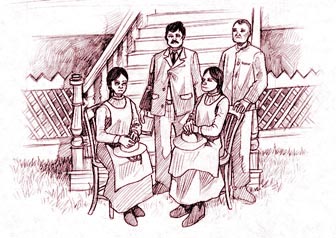It was hardly surprising, given these attitudes, that the plan, when the cabinet approved the first of the new industrial schools, had a decidedly denominational and masculine air about it. It would be up to the Indian commissioner located in the region to 'determine whether the pupils be taken from one tribe or indirectly from all the bands in a given area. Significantly, no reference was made to recruiting Métis students or employing Métis staff, as Davin had so emphatically recommended. Although some Metis and non-status Indian children were quietly admitted in the early years of the new residential system, by the 1890s Ottawa was insisting that it would provide grants only for the children of status Indians, for whom the federal government had constitutional responsibility.
By the following year, a trio of the most ambitious
boarding establishments that had been seen since the New England Company's
establishment of the 


